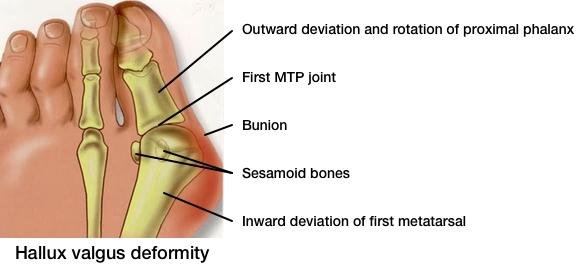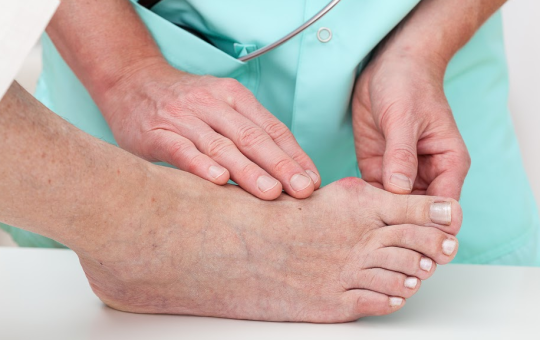A bunion, also known as hallux abducto valgus, is a foot condition in which your big toe points toward your second toe instead of pointing straight ahead. This misalignment causes a bump to develop on the inside edge of your big toe and first metatarsal bone. This causes your big toe to point away … Read More
New Minimally Invasive Bunion Surgery in Atlanta
or Call 770-284-1616
Minimally invasive bunion surgery is the best new bunion correction surgery treatment option to remove bunions nowadays.
A bunion is a bony bump that develops on the inside of the big toe. It is also called hallux valgus. In hallux valgus, the first metatarsal deviates inwards and the proximal phalanx deviates outwards causing a bony bump on the inside of the big toe. This deformity causes uneven weight-bearing, arthritis, and pain at the big toe joint.

The traditional bunion surgery procedure involves making large incisions, extensive disruption of soft tissue in an attempt to correct the bunion.
The minimally invasive bunion surgery is different because the surgeon makes a series of small keyhole incisions to correct the bunion. There is much less soft tissue destruction and stripping required to access the bones to make corrections. The minimally invasive surgery does not injure the soft tissues of the foot as much as in the traditional surgery, so there is less pain and swelling after the procedure.
How is Minimally invasive Bunion Surgery performed?
The foot is initially numbed using an ankle block. The patient can remain awake or be asleep.
During this procedure, tiny keyhole-size incisions are made. The surgeon is now able to to cut and realign the bones using special instruments. The surgeon uses fluoroscopy, a type of continuous X-ray imaging, to see the bones clearly and determine the correct bone alignment. The bones are then fixed into place. There’s minimal swelling and minimal scar tissue formation. The patients heal faster, recovery is quick.
Can any surgeon perform this kind of surgery?
Not all foot and ankle surgeons can perform minimally invasive foot surgery.
Minimally invasive foot surgery requires a new set of technical skills in order to master the different minimally invasive techniques. The surgeon needs special training with the special tools used for this type of surgery.
What are the Advantages of Minimally Invasive Bunion Surgery?
- Most patients are up and walking immediately after the surgery
- You may have to wear a surgical shoe for about six weeks.
- Less painful than the traditional bunion surgery
- We are not disrupting the soft tissue as in the traditional surgery, so there is less swelling and less pain
- Quicker recovery and earlier return to activity
- Better joint movement is achieved
- Earlier return to shoewear
- Better cosmetic results: No big scar on the foot
Some experts believe that Minimally Invasive Bunion Correction Surgery is a “game changer” in forefoot surgery. However, note that there are risks involved with any surgery or invasive procedure. Make sure that your surgeon answers all your questions.
Is this Procedure for me?
Most Bunions can be corrected with minimally invasive surgery. Schedule a consultation now. Our foot surgeon will exam you, discuss all treatment options with you in detail and answer all your questions.
Our patient testimonials



